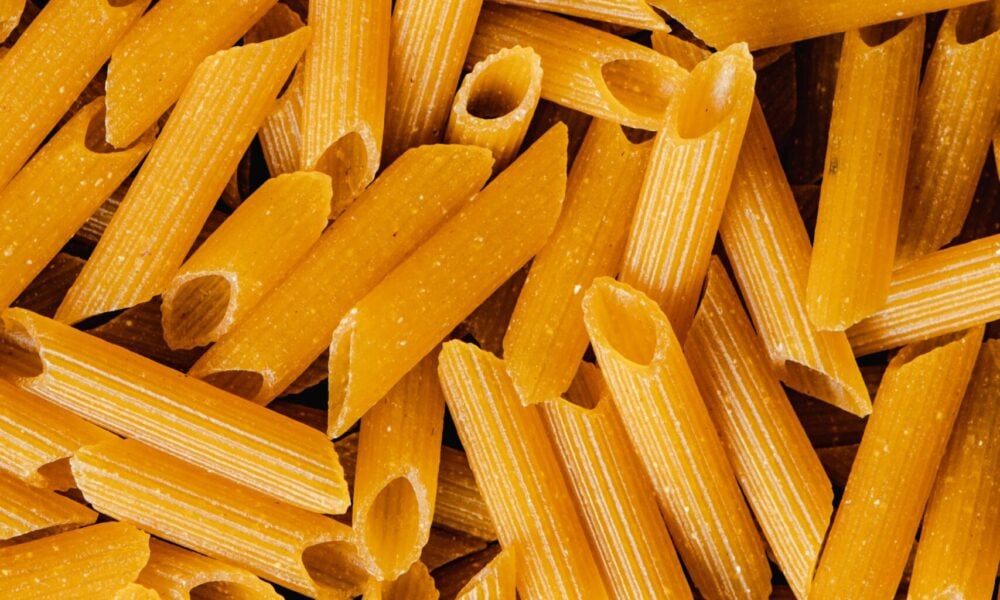Whether it’s due to allergies, intolerances, dieting or autoimmune conditions like Coeliac Disease, many people across the UK are looking to remove Gluten from their diet – the BBC estimate 8.5 million people are choosing gluten-free alternatives when shopping. There are many different conditions that can factor into a person’s physical reaction, and this article aims to shed some light on the somewhat confusing subject.
What is a Gluten Allergy?

Gluten is a protein found in many cereals such as wheat, rye, durum and barley, to name just a few. It’s highly sought after in baked goods such as bread and biscuits because the protein survives in high temperatures during the cooking process while also acting as a binding agent, giving bread its elastic feel and crunchy texture.
Some other common foods that include gluten are:
- Cereal
- Beer
- Pasta
- Gravy
- Condiments and sauces, such as soy sauce
- Snack foods such as crisps, cookies, and pretzels
- Canned Soup
Its binding properties make gluten a popular choice in a wide variety of foods. So if you struggle to digest foods containing the protein it’s best to stick to alternative products such as gluten-free bread, and always check the ingredient label before buying food products.
As gluten is identified as one of the 14 main allergens, it’s a legal requirement in the UK that businesses must clearly display these allergens on the packaging and menus of any food items containing them. Failure to do so can result in unlimited fines from local authorities, reputational damage, and serious health risks to customers.
- Swelling of the mouth and throat region;
- Rashes, which may be itchy;
- Headaches;
- Nasal congestion;
- Nausea, stomach cramps, diarrhoea, and vomiting
- Breathing difficulties;
- Anaphylactic shock, which can be fatal.
Anaphylaxis may present as: swelling of the airways, chest pain, difficulty breathing or swallowing, blue discolouration of the skin, or dizziness.
Even if a business believes its ingredients are labelled correctly, there’s a danger of cross-contamination if foods containing gluten are cooked in the same area. As a result, it’s important to clean and disinfect surfaces and equipment before use. A more in-depth guide on how to avoid cross-contamination can be found on the Food Standard Agency’s website.
At LiberEat, we’ve also seen instances of food businesses omitting allergens from packaging and menus in error which is why we have developed our Allergen and Detection Technology – to work as a second line of defence, capturing errors from manual entry or supplier data.
The difference between Gluten Intolerance, Gluten Allergies and Coeliac Disease

It’s a common misconception that gluten intolerance and Coeliac Disease are types of allergies, but that isn’t always the case. There are different types of gluten intolerance and gluten sensitivity, and the three conditions are classified differently and triggered in different ways.
As mentioned in our History of Allergies article, when suffering from an allergic reaction, your immune system identifies the allergen as a foreign substance known as an antigen and will try and fight it off. To achieve this, antibodies known as Immunoglobulin E are produced. There are different types of immunoglobulins to counter the appropriate kind of antigen, which they do by binding to a kind of blood cell known as a mast cell. This triggers the cell to release a compound known as histamine, which is responsible for the typical adverse reactions we’re used to, such as breathing difficulties, vomiting, and headaches.
Medical professionals classify Coeliac Disease as an autoimmune disease. It shares some similarities with typical allergic reactions. The body will produce antibodies after misidentifying one of the proteins gluten is composed of, gliadin, as being harmful to the body. These antibodies will eventually damage cells known as villi that line your intestine. Its purpose is to absorb nutrients from the foods you eat and transfer them into your bloodstream to reach different areas of your body.
One of the most common symptoms stemming from this would be diarrhoea, as the body fails to digest foods properly due to the damaged villi. In more severe cases of the disease, the long-term lack of nutrients can result in malnutrition, leaving you fatigued, induce muscle loss, and stunt growth if present in children.
While Coeliac Disease and allergies are similar, the antigens affect your body differently, which can result in different reactions, so it’s essential to be aware of the differences.
The Mystery Behind Gluten Intolerance

There’s very little known about gluten intolerance, also known as Non-Coeliac Gluten Sensitivity (NCGS), and as a result, it’s the subject of much debate.
The symptoms of NCGS can vary but are generally similar to those seen in Coeliac Disease, with patients reporting diarrhoea, abdominal pain, nausea, acid reflux, and fatigue, to name a few. Studies suggest that NCGS is the most prevalent of the three conditions, affecting in between 0.5-13% of the general population, yet some researchers are unsure if it even exists.
One of the main reasons is that NCGS sufferers lack any identifiable biomarkers, which are typically described as “a characteristic that is objectively measured and evaluated as an indicator of normal biological processes, pathogenic processes, or pharmacologic responses to a therapeutic intervention”.
Medical professionals use biomarkers to measure the progress of diseases or the effectiveness of treatment by tracking a patient’s blood pressure for example while checking for any abnormalities. As a result, it’s hard to perform a gluten intolerance test, and your doctor will likely only diagnose a patient with NCGS after performing an allergy and coeliac disease test and finding that there are no identifiable biomarkers present; such as antibodies typically present in patients with Coeliac Disease.
The medical community is unsure what causes NCGS. Some suggest that rather than gluten, FODMAPs (short-chain carbohydrates that the intestine may have trouble digesting) might be the cause, as these carbohydrates are present in cereals such as wheat and rye. Regardless of the cause, it’s recommended to stick to a gluten-free diet if you suffer a bad reaction to gluten, and some believe cooking low FODMAP recipes can alleviate symptoms as it’s had success as treatment for those with IBS. With further research in the coming years, we’ll hopefully have a clearer idea of how this condition occurs.
LiberEat - Allergen Error Detection Software
Food allergen rules and regulations continue to change and evolve. Food businesses in production, hospitality, catering, and retail must be vigilant when working with ingredients, products, and dishes containing allergens and exercise due diligence when providing ingredient and allergen information to consumers. Successful allergen management is a big part of Food Safety professionals creating a culture of care and excellence within their teams.
LiberEat offers a second line of defence for food businesses by detecting errors, allergens, and other harmful ingredients with our proprietary Allergen Detection Software. Food businesses can apply this technology directly to identify errors in allergen communications, preventing the risk of injury to consumers. Contact us today to learn more about how we can support your existing food safety processes.
LiberEat works closely with food businesses to ensure consumers are safe and healthy when consuming your produce.
To find out how LiberEat Technology supports food businesses to detect allergens and errors, to protect consumers
Sources
Allergen guidance for food businesses | Food Standards Agency
Avoiding cross-contamination in your food business | Food Standards Agency
IBS and the Low FODMAP diet | NHS Foundation Trust
Systematic review: noncoeliac gluten sensitivity | Wiley Online Library
The role of the gluten-derived peptide gliadin in celiac disease | MedCrave
What’s the evidence for the gluten-free lifestyle? | BBC

